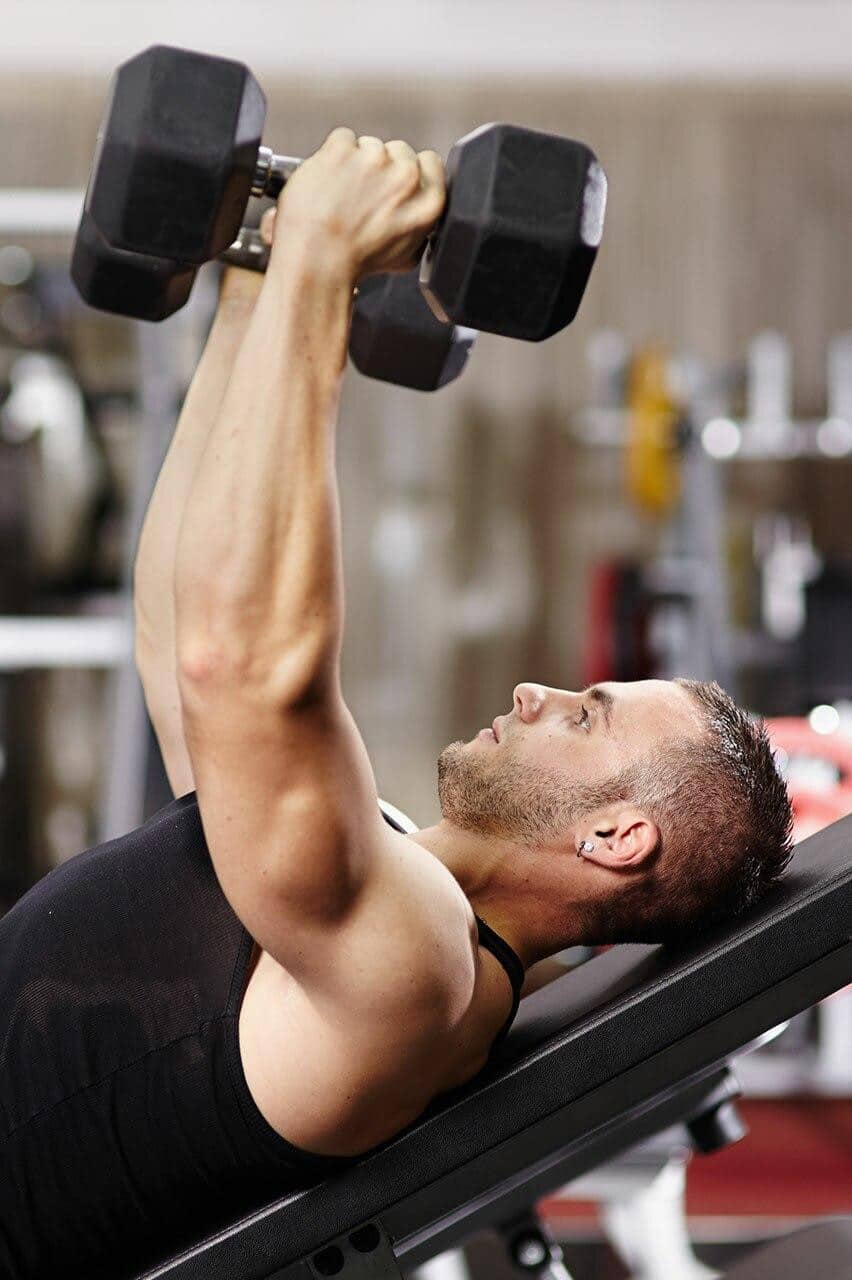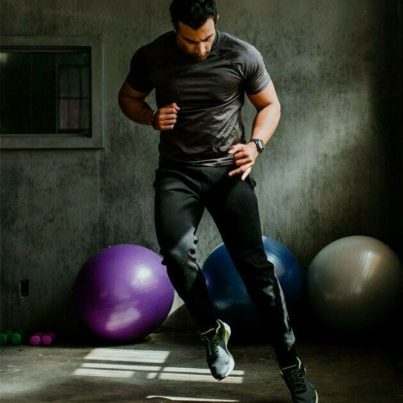16.0 CECs / eBook
Essentials of Strength Training and Conditioning 3rd Edition is the most comprehensive reference available for strength and conditioning professionals. In this text, 30 expert contributors explore the scientific principles, concepts, and theories of strength training and conditioning as well as their applications to athletic performance.
Essentials of Strength Training and Conditioning is the most preferred preparation text for the Certified Strength and Conditioning Specialist (CSCS) exam. The research-based approach, extensive exercise technique section, and unbeatable accuracy of Essentials of Strength Training and Conditioning make it the text readers have come to rely on for CSCS exam preparation.
The third edition presents the most current strength training and conditioning research and applications in a logical format designed for increased retention of key concepts. The text is organized into five sections. The first three sections provide a theoretical framework for application in Section 4, the program design portion of the book. The final section offers practical strategies for administration and management of strength and conditioning facilities.
- Section 1 (chapters 1 through 10) presents key topics and current research in exercise physiology, biochemistry, anatomy, biomechanics, endocrinology, sport nutrition, and sport psychology, and discusses applications for the design of safe and effective strength and conditioning programs.
- Section 2 (chapters 11 and 12) discusses testing and evaluation, including the principles of test selection and administration as well as the scoring and interpretation of results.
- Section 3 (chapters 13 and 14) provides techniques for warm-up, stretching, and resistance training exercises. For each exercise, accompanying photos and instructions guide readers in the correct execution and teaching of stretching and resistance training exercises. This section also includes a set of eight new dynamic stretching exercises.
- Section 4 examines the design of strength training and conditioning programs. The information is divided into three parts: anaerobic exercise prescription (chapters 15 through 17), aerobic endurance exercise prescription (chapter 18), and periodization and rehabilitation (chapters 19 and 20). Step-by-step guidelines for designing resistance, plyometric, speed, agility, and aerobic endurance training programs are shared. Section 4 also includes detailed descriptions of how principles of program design and periodization can be applied to athletes of various sports and experience levels. Within the text, special sidebars illustrate how program design variables can be applied to help athletes attain specific training goals.
- Section 5 (chapters 21 and 22) addresses organization and administration concerns of the strength training and conditioning facility manager, including facility design, scheduling, policies and procedures, maintenance, and risk management.
Chapter objectives, key points, key terms, and self-study questions provide a structure to help readers organize and conceptualize the information. Unique application sidebars demonstrate how scientific facts can be translated into principles that assist athletes in their strength training and conditioning goals.
Course Curriculum
Chapter 1. Structure and Function of the Muscular, Neuromuscular, Cardiovascular, and Respiratory Systems
Gary R. Hunter, PhD, and Robert T. Harris, PhD
- Muscular System
- Neuromuscular System
- Cardiovascular System
- Respiratory System
- Conclusion
- Learning Aids
Chapter 2: Bioenergetics of Exercise and Training
Joel T. Cramer, PhD
- Essential Terminology
- Biological Energy Systems
- Substrate Depletion and Repletion
- Bioenergetic Limiting Factors in Exercise Performance
- Oxygen Uptake and the Aerobic and Anaerobic Contributions to Exercise
- Metabolic Specificity of Training
- Conclusion
- Learning Aids
Chapter 3: Endocrine Responses to Resistance Exercise
William J. Kraemer, PhD, Jakob L. Vingren, PhD, and Barry A. Spiering, PhD
- Synthesis, Storage, and Secretion of Hormones
- Muscle as the Target for Hormone Interactions
- Role of Receptors in Mediating Hormonal Changes
- Steroid Hormones versus Polypeptide Hormones
- Heavy Resistance Exercise and Hormonal Increases
- Mechanisms of Hormonal Interactions
- Hormonal Changes in Peripheral Blood
- Adaptations in the Endocrine System
- Primary Anabolic Hormones
- Adrenal Hormones
- Other Hormonal Considerations
- Conclusion
- Learning Aids
Chapter 4: Biomechanics of Resistance Exercise
Everett Harman, PhD
- Musculoskeletal System
- Human Strength and Power
- Sources of Resistance to Muscle Contraction
- Joint Biomechanics: Concerns in Resistance Training
- Movement Analysis and Exercise Prescription
- Conclusion
- Learning Aids
Chapter 5: Adaptations to Anaerobic Training Programs
Nicholas A. Ratamess, PhD
- Neural Adaptations
- Muscular Adaptations
- Connective Tissue Adaptations
- Endocrine Responses and Adaptations to Anaerobic Training
- Cardiovascular and Respiratory Responses to Acute Exercise
- Compatibility of Aerobic and Anaerobic Modes of Training
- Overtraining
- Detraining
- Conclusion
- Learning Aids
Chapter 6: Adaptations to Aerobic Endurance Training Programs
Ann Swank, PhD
- Acute Responses to Aerobic Exercise
- Chronic Adaptations to Aerobic Exercise
- Designing Aerobic Programs for Optimizing Adaptations
- External Influences on Cardiorespiratory Response
- Individual Factors Influencing Adaptations to Aerobic Endurance Training
- Conclusion
- Learning Aids
Chapter 7: Age- and Sex-Related Differences and Their Implications for Resistance Exercise
Avery D. Faigenbaum, EdD
- Children
- Female Athletes
- Older Adults
- Conclusion
- Learning Aids
Chapter 8: Psychology of Athletic Preparation and Performance
Bradley D. Hatfield, PhD, and Evan B. Brody, PhD
- Definitions of Key Concepts in Sport Psychology
- How the Mind Affects the Athlete’s Physical Performance
- Ideal Performance State
- Motivational Phenomena
- Influence of Arousal on Performance
- Mental Management of Physical Resources: Controlling Psychological Processes
- Conclusion
- Learning Aids
Chapter 9: Performance-Enhancing Substances
Jay R. Hoffman, PhD, and Jeffrey R. Stout, PhD
- Types of Performance-Enhancing Substances
- Hormones
- Dietary Supplements
- Conclusion
- Learning Aids
Chapter 10: Nutritional Factors in Health and Performance
Kristin Reimers, PhD
- Role of the Nutritionist
- How to Evaluate the Adequacy of the Diet
- Macronutrients
- Micronutrients
- Fluid and Electrolytes
- Precompetition and Postexercise Nutrition
- Weight and Body Composition
- Eating Disorders: Anorexia Nervosa and Bulimia Nervosa
- Obesity
- Conclusion
- Learning Aids
Chapter 11: Principles of Test Selection and Administration
Everett Harman, PhD
- Reasons for Testing
- Testing Terminology
- Evaluation of Test Quality
- Test Selection
- Test Administration
- Conclusion
- Learning Aids
Chapter 12: Administration, Scoring, and Interpretation of Selected Tests
Everett Harman, PhD, and John Garhammer, PhD
- Measuring Parameters of Athletic Performance
- Selected Test Protocols and Scoring Data
- Statistical Evaluation of Test Data
- Conclusion
- Learning Aids
Chapter 13: Warm-Up and Stretching
Ian Jeffreys, PhD
- Warm-Up
- Flexibility
- Types of Stretching
- Conclusion
- Static Stretching Techniques
- Dynamic Stretching Techniques
- Learning Aids
Chapter 14: Resistance Training and Spotting Techniques
Roger W. Earle, MA, and Thomas R. Baechle, EdD
- Exercise Technique Fundamentals
- Spotting Free Weight Exercises
- Conclusion
- Resistance Training Exercises
- Learning Aids
Chapter 15: Resistance Training
Thomas R. Baechle, EdD, Roger W. Earle, MA, and Dan Wathen, MS
- Step 1: Needs Analysis
- Step 2: Exercise Selection
- Step 3: Training Frequency
- Step 4: Exercise Order
- Step 5: Training Load and Repetitions
- Step 6: Volume
- Step 7: Rest Periods
- Conclusion
- Learning Aids
Chapter 16: Plyometric Training
David H. Potach, MPT, and Donald A. Chu, PhD, PT
- Plyometric Mechanics and Physiology
- Plyometric Program Design
- Age Considerations
- Plyometrics and Other Forms of Exercise
- Safety Considerations
- Conclusion
- Plyometric Drills
- Learning Aids
Chapter 17: Speed, Agility, and Speed-Endurance Development
Steven S. Plisk, MS
- Movement Mechanics
- Running Speed
- Agility
- Methods of Developing Speed and Agility
- Program Design
- Conclusion
- Learning Aids
Chapter 18: Aerobic Endurance Exercise Training
Benjamin H. Reuter, PhD, and Patrick Hagerman, PhD
- Factors Related to Aerobic Endurance Performance
- Designing an Aerobic Endurance Program
- Types of Aerobic Endurance Training Programs
- Application of Program Design to Training Seasons
- Special Issues Related to Aerobic Endurance Training
- Conclusion
- Learning Aids
Chapter 19: Periodization
Dan Wathen, MS, Thomas R. Baechle, EdD, and Roger W. Earle, MA
- Responses to Training Stress
- Periodization Cycles
- Periodization Periods
- Applying Sport Seasons to the Periodization Periods
- Undulating (Nonlinear) versus Linear Periodization Models
- Example of a Macrocycle
- Conclusion
- Learning Aids
Chapter 20: Rehabilitation and Reconditioning
David H. Potach, MPT, and Terry L. Grindstaff, DPT
- Sports Medicine Team
- Types of Injury
- Tissue Healing
- Rehabilitation and Reconditioning Strategies
- Conclusion
- Learning Aids
Chapter 21: Facility Organization and Risk Management
Michael Greenwood, PhD, and Lori Greenwood, PhD
- General Aspects of New Facility Design
- Existing Strength and Conditioning Facilities
- Assessing Athletic Program Needs
- Designing the Strength and Conditioning Facility
- Arranging Equipment in the Strength and Conditioning Facility
- Maintaining and Cleaning Surfaces
- Maintaining and Cleaning Equipment
- Scheduling the Strength and Conditioning Facility
- Litigation Issues
- Conclusion
- Learning Aids
Chapter 22: Developing a Policies and Procedures Manual
Boyd Epley, MEd, and John Taylor, MS
- Mission Statement and Program Goals
- Program Objectives
- Job Titles, Descriptions, and Duties of the Strength and Conditioning Staff
- Staff Policies and Activities
- Facility Administration
- Conclusion
- Learning Aids
Let Customers Speak for Us
Payment Plans Available
Choose from 3, 6, or 12 months. Instant approval. Safe and secure.





